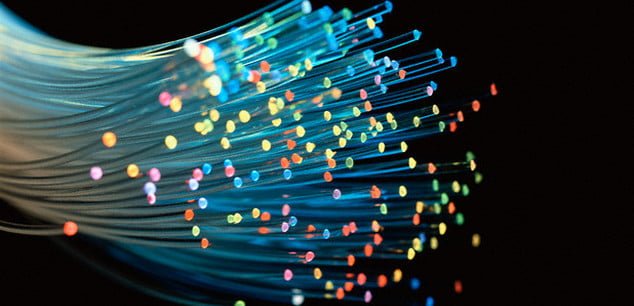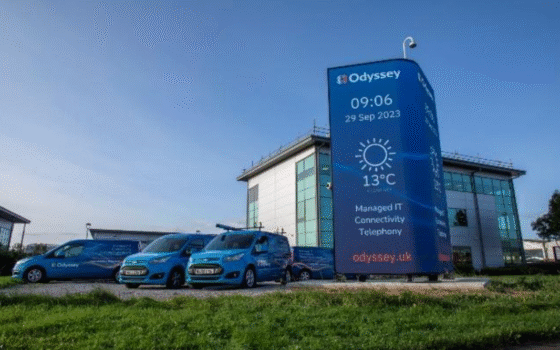
Choosing the right connectivity for your business can be a challenge. With many choices, how do you know which type is right for your business. Here we outline the different types of connectivity, how infrastructure plays a part, and what you would be paying for.
- Internet Connectivity:
- Description: Internet connectivity refers to the ability of devices to access the World Wide Web and other online services using Internet Service Providers (ISPs) and internet infrastructure.
- Types of Internet Connections:
- DSL (Digital Subscriber Line): Uses telephone lines to provide internet access. Speeds can vary depending on distance from the provider’s central office.
- Fiber Optic Internet: Utilises fibre optic cables to transmit data at high speeds. Offers faster and more reliable connections compared to DSL and cable.
- Satellite Internet: Provides internet access via satellite communication. Suitable for remote areas where traditional wired connections are unavailable.
Local ISP Infrastructure: The quality and reliability of internet connectivity depend on the infrastructure provided by local ISPs. Areas with better infrastructure may have faster and more reliable internet connections.
Last-Mile Connectivity: The “last mile” refers to the final leg of the telecommunications network that delivers services to customers’ premises. In areas with poor last-mile connectivity, users may experience slower speeds or service outages.
- What You’re Paying For:
- Access to the internet backbone.
- Bandwidth and speed of data transmission.
- Data usage allowances or unlimited access.
- Additional services such as email accounts, web hosting, and security features.
- Local Area Network (LAN) Connectivity:
- Description: LAN connectivity enables devices within a confined geographical area, such as a home, office, or campus, to communicate and share resources.
- Types of LAN Connections:
- Ethernet: Uses wired connections and Ethernet cables to connect devices within a LAN.
- Wi-Fi (Wireless Fidelity): Enables wireless connections between devices using radio waves.
Wired Infrastructure: LAN connectivity relies on wired infrastructure such as Ethernet cables and switches. The quality of these components, as well as the layout and design of the network, can affect performance and reliability.
Wi-Fi Interference: In densely populated areas or locations with many wireless networks, Wi-Fi performance may be affected by interference from neighbouring networks, physical obstructions, or electronic devices.
- What You’re Paying For:
- Network infrastructure including routers, switches, and cables.
- Software licensing for network management tools.
- Maintenance and support services.
- Security measures such as firewalls and antivirus software.
- Wireless Connectivity:
- Description: Wireless connectivity allows devices to communicate without the need for physical cables, using wireless protocols such as Wi-Fi.
- Types of Wireless Connections:
- Wi-Fi: Provides wireless internet access within a certain range of a Wi-Fi router or access point.
Wi-Fi Coverage: The layout of buildings, the presence of walls and other obstacles, and the placement of wireless access points can all impact Wi-Fi coverage and signal strength.
Cellular Coverage: Local terrain, building materials, and distance from cellular towers can affect the strength and reliability of cellular signals. Rural or remote areas may have limited cellular coverage.
- What You’re Paying For:
- Wireless infrastructure including routers, access points, and antennas.
- Internet service if Wi-Fi is used for internet access.
- Device costs for wireless-enabled devices.
- Maintenance and support services.
- Cellular Connectivity:
- Description: Cellular connectivity allows devices to access the internet and other services via cellular networks operated by mobile carriers.
- Types of Cellular Networks:
- 2G, 3G, 4G LTE, 5G: Different generations of cellular networks offering varying speeds and capabilities.
Cell Tower Density: The density of cellular towers in an area affects signal strength and coverage. Urban areas typically have more cell towers, providing better coverage and higher data speeds compared to rural areas with fewer towers.
Obstructions: Natural or man-made obstructions such as hills, buildings, or foliage can block or degrade cellular signals, leading to dead zones or poor reception in certain areas.
- What You’re Paying For:
- Mobile service plans including data, voice, and text allowances.
- Device costs if purchased through a carrier.
- Roaming charges for international use.
- Additional services such as device insurance and premium content subscriptions.
- Satellite Connectivity:
- Description: Satellite connectivity provides internet access and communication services via satellites orbiting the Earth.
- Types of Satellite Connections:
- Satellite Internet: Offers internet access in areas where terrestrial broadband is unavailable.
Line of Sight: Satellite dishes require a clear line of sight to the satellite in orbit. Buildings, trees, or other obstructions can interfere with the signal, affecting the quality of satellite connectivity.
Weather Conditions: Satellite signals may be affected by adverse weather conditions such as heavy rain, snow, or fog, leading to signal degradation or temporary service interruptions.
- What You’re Paying For:
- Subscription fees for satellite internet.
- Equipment costs for satellite dishes, modems, and receivers.
- Installation and setup charges.
- Data usage allowances and additional charges for exceeding limits.
- Ethernet Connectivity:
- Description: Ethernet connectivity involves wired connections using Ethernet cables, commonly used for local networks and internet connections.
- Types of Ethernet Connections:
- Ethernet LAN: Connects devices within a LAN using Ethernet cables and switches.
- Ethernet WAN: Provides high-speed internet access using Ethernet connections.
Physical Infrastructure: The quality and reliability of Ethernet connectivity depend on the physical infrastructure, including Ethernet cables, switches, and routers. Poorly maintained or outdated equipment can lead to network issues and downtime.
Local Network Configuration: The configuration of the local network, including network topology, VLANs, and quality of service (QoS) settings, can impact performance and prioritization of network traffic.
- What You’re Paying For:
- Internet service fees if Ethernet is used for internet access.
- Network infrastructure including Ethernet switches, routers, and cables.
- Installation and configuration costs.
- Maintenance and support services.
Each type of connectivity has its own characteristics, advantages, and costs associated with it, catering to different needs and preferences of users and organisations.
Local infrastructure plays a crucial role in determining the quality, reliability, and availability of different types of connectivity. Factors such as the presence of local ISPs, the condition of wired and wireless infrastructure, and environmental considerations all influence the overall connectivity experience for users and businesses in each area.



